MODULE 7: WORKPLACE PRACTICES Part B
CREDITS: 10
LEVEL: 5
| GRADUATE PROFILE 1 | LEARNING OUTCOMES | ASSESSMENT |
|---|---|---|
|
Select and apply a range of effective technical communication skills to communicate with diverse audiences in the tourism industry to proactively strengthen the visitor experience.
|
LO 7.3 Evaluate experiences of tourism products and services to create visitor information and enhance the visitor experience. (5 Cr) |
TTM5 07B Visitor Information Write a familiarisation report for industry colleagues based on a destination experience or site visit to support the visitor experience proactively. Prepare a destination web page, blog, vlog, virtual reality, or other digital presentation to communicate with diverse audiences in tourism. |
|
LO 7.4 Apply digital technology to communicate with diverse tourism industry audiences to support destination marketing. (5 Cr) |

Part B of this module is about writing about your travel experiences, discussing your thoughts and opinions, and providing advice and unique tips about destinations or experiences fairly and objectively.
You will compose a professionally written familiarisation report based on your experiences for industry colleagues based on a destination experience or site visit to support the visitor experience proactively. You will also prepare a digital presentation that supports destination marketing and communicates with diverse audiences. Your digital presentation could include writing a blog, preparing a webpage, or creating a vlog.
What is a Famil?

A famil, familiarisation trip or FAM is an educational tool that involves travelling to and experiencing a destination you are unfamiliar with. They have always said that travel broadens the mind. How true this is! When we immerse ourselves into another culture as a tourist and experience a new way of life, culture and tradition, we are expanding our minds and tapping into a new perspective and new way of thinking.
Why not use the same approach when it comes to destination development? A FAM trip, or familiarisation trip, is a learning visit in which media, influencers, writers or travel trade are invited to a destination to gain a first-hand experience and familiarise themselves with the destination.
FAM trips are opportunities for travel businesses to familiarise agents and media personnel with their destination and immerse them in the local culture, introduce them to local operators, and highlight the benefits their company offers, essentially taking them backstage. For instance, they can have the opportunity to meet a celebrity chef that they have been referring their clients to.
Different types of famils can focus on a destination as a whole, or specific products only. For example:
- Conference and events venues only
- International famils – includes various products and services within an international destination
- Domestic/regional famils – includes various products and services within a region/s
- Specialised product famils – which involve inspecting only one type of product within a region, for example, conference and events venues in the Waikato.
A famil trip should educate you and build your product knowledge through first-hand experiences of a destination and its available products and services. You could also use your personal experiences and new/updated product knowledge and discuss famils in the workplace to:
- Recommend the destination, products, and services to clients you believe they would enjoy.
- Share your knowledge with your clients and suggest and advise clients to enhance their overall visitor experience.
- Share your knowledge with your colleagues who weren’t lucky enough to go on the famil, so they receive an up-to-date review on the destination, the products, and services so they can use that knowledge to assist their clients better.
Who Goes on a Famil?
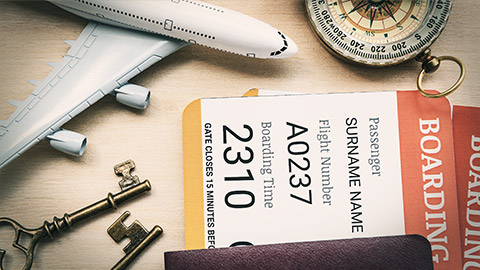
The people who go on famils sell travel and tourism, but sometimes others who don’t sell travel may participate for various reasons. These include:
- Travel agents – it is understandable why travel agents go on famils because they deal directly with and sell travel to the public.
- Travel wholesalers – although travel wholesalers do not deal with the public at all, they must be very knowledgeable about the destinations they sell. Travel agents rely on them to give expert advice about a destination and/or a particular product or service so that they can pass on that information to their clients.
- I-site consultants – i-site consultants would visit regional famils to inspect and experience local activities, attractions, and hotels to build their product knowledge of the region they are selling/promoting to visitors. They need to confidently discuss the products available to visitors and give them tips and advice to enhance their visitor experience.
- Tour operators – need to have experience with what they are selling so they can confidently discuss and advise the travel agents about the tours so that the agents can pass on the knowledge and advice to their clients. The staff member would join an actual tour that had genuine tour participants.
- Personal assistants (PA) and executive assistants (EA) of larger organisations – would not be going on international famils. They would most likely participate in small domestic or regional famils, focusing on inspecting conference and events venues to ascertain what venues would suit the company they work for in terms of their annual conference, for example, small management meetings.
- Media partners – such as journalists, editors and influencers.
Efficacy of FAMs
Why is it important to learn about other destinations and why are FAM trips one of the most effective ways to do so?
First-Hand Experience
On a FAM trip, you will meet stakeholders of the destination who have had a key input into how their place has been developed. You will gain first-hand information on location about important topics such as what went well for them and what ideas and practices weren’t as successful. Core themes that have arisen on the FAM trips that we have organised are the concepts of collaboration and community engagement and involvement.
Broadening Networks and Connection With Others
Not only are FAM trips a way of getting to know a destination and its developmental phases and practices, but it is also a networking opportunity. It is a chance to connect with others who you wouldn’t normally have the chance to connect with. This may be someone who owns a similar business to you or your peer in a different agency or organisation. It is an invaluable event to broaden your network. On top of that, it is an opportunity to strengthen relationships with the stakeholders of your group, network or organisation that join you on the trip.
Fresh and New Perspectives
Through meeting your peers in another destination, you gain insights into their way of thinking, and alternative methods and processes implemented on their journey. It can sometimes be a form of re-discovery, gaining fresh perspectives on destination development. This then can be inspiring for your recommendations and increase your confidence in your approach.
Peer Learning and Knowledge Sharing
Learning from stakeholders in other destinations more established than yours allows you to learn from those further down the line. Peer learning is by far one of the most practical ways to learn and through the FAM trip you will acquire information about the processes the host destination has used and the journey the stakeholders have gone on to get where they are.
Source: https://www.thetourismspace.com/blog/fam-trips-important-learn-other-destinations
Famil Report
A famil report is a document written to allow others to learn about a destination, giving the reader an accurate and fair portrayal of the destination and the products and services available. When composing your report, think about really descriptive words you could use that illustrate a vivid picture for the reader. Also, use pictures of the various products and services to help exemplify it.
The destination, including the products and services experienced, must be evaluated fairly and objectively during the famil. You must offer your thoughts and opinions to provide candid reviews, allowing your colleagues to understand the product/ service accurately.
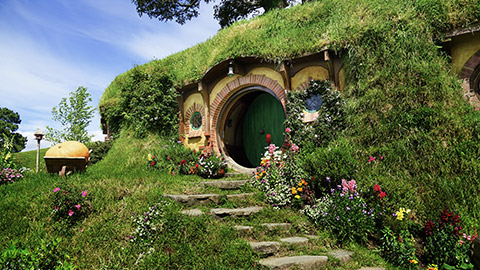
In terms of offering your thoughts and opinions, you must keep in mind that you must evaluate a product or service fairly and not based on your feelings or standards. For example, you may prefer comfortable hotel accommodation – perfectly fine. But in terms of composing a famil report, if you inspected a backpacker hotel, you cannot let your personal feelings get involved and say that you’d never recommend this to anyone just because you would never stay there. It might ideally be suited to lots of other people and excellent value for money.
You must judge the product or service fairly, but this doesn’t mean you can’t be critical. For example, the property may be described as having ‘clean & tidy dormitories with a generous amount of storage space allocated per bed.’ But the reality may be quite different.
If the property doesn’t live up to what is claimed, you can inform your colleagues of this. You do not want unhappy clients.
The sorts of things you need to consider are:
- Does the product/service meet expectations in terms of it being what it says it is?
- What type of visitors does it suit?
- Is it value for money?
- Recommendations
Here are a few examples:
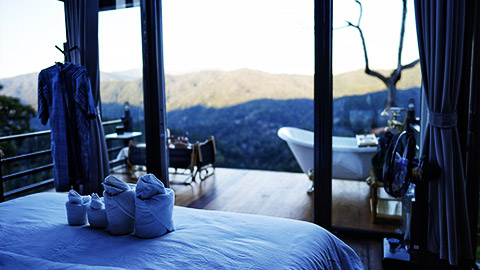
The hotel rooms look tired and need an upgrade. However, they are clean and tidy and pretty good value for money at only $110 per night compared to other properties of a similar standard. The rooms are reasonably small and therefore recommended for no more than 2 guests (even though they can provide a rollaway for a third).
This property states that it is family-friendly; however, as it’s set on a hillside, there are many stairs to climb to get to the rooms, which can be challenging to manage for more minor children. I certainly would not recommend this to those with mobility issues. Otherwise, its location and position on the hillside offer a beautiful outlook of the natural landscape – an excellent option for active travellers and those with older children.
The standard rooms are much smaller than I had imagined. Due to the small windows and position of the rooms in the hotel (which look into the building next door), they are pretty dimly lit as not much natural light can enter the room, so you pretty much need to have the lights switched on when you are in the room. I recommend booking the ‘superior rooms’ in the next room category as this offers much better value for money. For only an extra $30 per night (or $180.00 per night), these rooms are much more appealing with about 50% more space and much bigger windows (which offer a much better view of the cityscape) and let in a lot more natural light into the room creating a much fresher and livelier atmosphere.
Explore this website for ideas on describing a tourist attraction or destination.
Tips and Advice
These tips and advice are typically not found in brochures or websites. These snippets of helpful information can make a difference to your clients as they will enhance their visitor experience. You would also have these things in your famil report so your colleagues would be aware and could advise their clients.
Let’s use a ‘Half Day Mountain Trek’ as an example of how you could offer tips and advice to clients.
Comfort
The enhancement may be simple tips that ensure your clients would be comfortable at all times during their trip – provided they listen, of course.
- Take warm clothing on the half-day mountain trek because it gets cold under the canopy, especially when you stop for a 30-minute afternoon tea.
- Take insect repellent because the mosquitoes start coming out towards the trek’s end.
Additional or Better Experiences
Other tips and advice can result in your client experiencing more things or enhancing a specific experience.
- Take your togs and a towel as there is a fantastic water hole, which the guide sometimes stops at and lets the group have a dip. This does depend on whether there has been some decent rainfall in the days leading up to the trek. The water is brilliantly clear, and it’s just an amazing experience.
Awareness
Tips and advice also include information that would prepare the client for what they might encounter while travelling. The following examples are not based on any particular destination.
- Cultural awareness advice is to ensure the client doesn’t offend the locals, e.g. Bartering is not appropriate at all; this is likely to cause offence and embarrassment to the stall holder.
- Health & safety, e.g. don’t drink the water from the tap, always drink bottled water, even when brushing your teeth.
- General information, e.g. all shops are closed on Sundays.
The purpose of the following exercises is to ensure that you understand that a famil report is reviewing a product objectively and offering your thoughts and opinion in a balanced discussion, all the while offering advice and tips that enlighten the audience about the things that you won’t find in the brochure or a website.

Explore this website, and have a look at Greece before you go, with The House of Travel.
Your quick guide to a holiday packed with sunshine, salt air and endless shades of blue.
Learning Activity: Tips and Tricks
Think about the travel experience you are going to base your report on and come up with some tips and advice that you could share with your clients and colleagues.
Examples include but are not limited to:
- Try and avoid the 3 pm bus, as it’s very busy due to school finishing. Take the 2.30 pm or 3.30 pm service, either of these is much more relaxing. It costs $2.50 one way or $4.00 if you purchase a return ticket.
- I would highly recommend hiring a scooter while in Rarotonga, it’s a really easy and fun way to get around. I suggest, hiring the XYZ model of scooter as they offer more storage space (under the seat) and are easier to manoeuvre around the small streets.
- Check out the spectacular sunset from ABC's viewpoint, it’s simply breathtaking. Take some nibbles and a bottle of wine to enjoy as there are areas to lay down a blanket.
- At the XYZ café, if you show your key card from ABC Hotel, you are eligible for a complimentary cocktail on arrival – the ‘Rarotongan Sunset’ cocktail is amazing!
Post your findings on the forum Tips and Tricks.
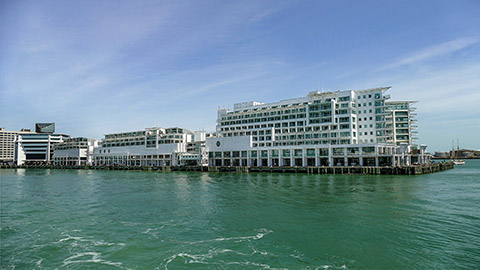
Case Study: The Hilton Hotel, Auckland
The following three pieces of text are about the Hilton Hotel, Auckland.
Read them and consider the example responses in the following.
a. Critically analyse and evaluate each text and come to your conclusions about whether it is appropriate to be part of famil report.
b. If you don’t think the text is appropriate for a famil report, think about why and the context of where the text might typically be seen.
NOTE: In a famil report, you can undoubtedly identify and discuss the areas that you feel need to be addressed significantly if it could affect a guest’s stay, but you need to word it right without imposing your own solid beliefs of what should and shouldn’t be done. You could make a brief note of things like this.
Text One:
Unwind and relax in one of the 165 modern rooms and suites presenting stunning sea and city views from the balcony and decking areas. Positioned on Princess Wharf within Auckland’s city centre, just a five-minute walk from the CBD and the entertainment and dining precincts, Viaduct, Wynyard Quarter and Britomart.
Property Features: 24-hour fitness, Wi-Fi internet, jogging track, outdoor heated lap pool with underwater viewing window, seafood restaurant, wine, and cocktail bar.
Room Features: Air-conditioning, TV, internet, hairdryer, ironing facilities, refrigerator, shower, bathrobe, mini-bar, safe, tea and coffee facilities.
Child Policy: Children -17 years old can stay free when sharing with adults in existing bedding.
Maximum people per room
Hilton Guest Room 2
Deluxe Harbour View 2
Harbour View Plus, Hilton Bow Suites, Relaxation Suite, Presidential Suite 3
Example answer:
This text is not what you should include in a famil report. Although the information is factual, it is information that you can find in a travel brochure or a website. The text gives a brief overview of the property, lists some special features, and advises of some main policies – it doesn’t give the reader any tips or advice, and it doesn’t offer any opinions.
This piece of text is actually sourced from Go Holidays New Zealand Brochure.
Text Two:
Unwind at the Hilton Auckland hotel and admire stunning ocean views 300 metres out to sea. Positioned within Auckland’s city centre, the Hilton Auckland hotel is just a five-minute walk from Auckland’s central business district, as well as many impressive local attractions. Relax in one of 165 spacious and comfortable guest rooms with balconies, or upgrade to a Deluxe Harbour View Room for views over the waterfront. Choose a suite and enjoy the extra space of a separate living area and private sun deck.
Offering sweeping views of Auckland’s harbour, this Auckland hotel presents seven flexible meeting rooms for up to 700 guests. Aquamarine rooms are bathed in natural light and open onto a deck overlooking the ocean and the city. Host a corporate meeting or special event and enjoy various professional facilities. Keep in touch in the hotel’s 24-hour internet connectivity station and enjoy Wi-Fi in all public areas.
Dine with breathtaking views at Auckland restaurant FISH, celebrating New Zealand’s finest seafood in a menu designed by New Zealand celebrity chef Gareth Stewart. Savour this Auckland hotel’s cocktails at the Bellini Bar, including its signature cocktail with peach and prosecco. Keep fit in the hotel’s fully equipped fitness centre with the latest, modern cardiovascular equipment and weights and take in stunning city views from the floor-to-ceiling windows. Recuperate in the outdoor heated lap pool and marvel at spectacular sights from Auckland’s only underwater viewing window.
Example answer:
This text is not what you should include in a famil report. Although it includes very descriptive paragraphs and paints a brilliant picture of the hotel, it is all basically about the facts about the hotel which you can find on the website, or in a brochure, rather than someone’s opinion, advice and tips about the hotel.
This piece of text is actually from the Hilton website.
Text Three:
“Good for an average for a 5-star”
This is the second time I've stayed in the Hilton. It is a lovely hotel but given that it is 5-star and the cost, I'm not sure it was excellent. I have stayed in a range of accommodations-from hostels to 5 stars, and I'm not a fussy traveller, but when you're paying over $250-$300 a night, you expect a bit more.
Pros: The room was lovely (during this latest stay, we had a great corner room with balconies on 2 sides of the room). The bathroom had a bath (not that I got to use it, as I wasn't staying long enough). The staff were nice and pleasant.
Cons: UHT Milk, as a coffee drinker (who likes milk) I do have issues with 5-star hotels not giving you fresh milk-I guess it's my thing... I'm always impressed by a hotel that gives me fresh milk.
Overall, it is a nice, pleasant hotel in a great location in central Auckland (it has some great views and is close to a lot of what Auckland has to offer-Viaduct, Wynyard, Britomart areas. The hotel doesn't offer anything special.
Room Tip: The corner room was great, with views of Auckland CBD, Sky Tower, and the pool.
Example answer:
This is somewhat along the lines of what could be in a famil report as there are personal observations discussed, facts about the property and a ‘tip’ given about the corner room has great views, but overall, this is not exactly what you would expect in a famil report, as the writer included his gripes about the property not providing fresh milk.
This piece of text is actually an online review from TripAdvisor.
Now it is your turn to give it a go!
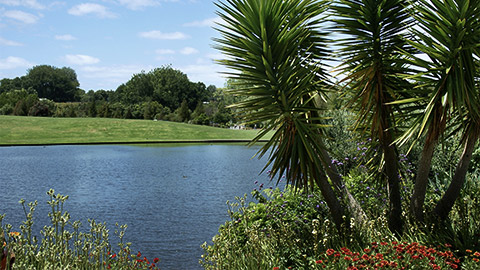
Learning Activity: Hamilton Lake
Read the following two examples of text based on the same topic–Hamilton Lake.
Critically analyse each text and compose a summative paragraph that discusses the text’s purpose, content, language, and target audience.
The first text is a description of Hamilton Lake, and the second text is rewritten into the context of a famil report.
Post your responses to the Forum Hamilton Lake.
Text One:
Hamilton Lake Domain has a long history as one of Hamilton’s premiere parks. It is a significant recreational facility for residents of Hamilton City and beyond within walking distance from the CBD. Hamilton Lake Domain provides a focal point for various water and land-based activities and offers a unique ecological environment in the heart of Hamilton City.
Lake Rotoroa caters to water-based recreational activities such as yachting, windsurfing, canoeing, paddle boats, model boats, dragon boating, waka ama, raft racing and a range of informal activities like feeding ducks or fishing.
Innes Common to the East and West of Lake Domain Drive caters for active recreation and sports, including hockey and cricket. Innes Common is home to the Gallagher Hockey Centre. It also attracts organised events, including fairs, kite days, family days, The Waikato Balloon Festival, fun runs, concerts, school holiday programmes, orientation, and similar activities.
The remaining park area caters for passive or casual recreation and is available for events like Carols by Candlelight. The esplanade walkway around the lake is a popular fitness circuit and walking route. Playgrounds beside the Verandah Cafe provide kids with a place to play while their minders enjoy a coffee with a lake view. The café is open 7 days from 8 am – 4 pm (or 5 pm during daylight savings).
Sourced from: https://hamilton.govt.nz/parks-recreation-and-community-spaces/parks/detail/hamilton-lake-domain
Text Two:
Hamilton Lake is a beautiful attraction like an eco-getaway in the middle of Hamilton.
The Lake Domain is the focal point of Hamilton Lake and the starting point for most visitors to the Lake. Free parking is available here during peak times such as the weekends and school holidays. Parking at the domain can be tricky due to its popularity, but it extends down the edge of the lake, and it is not too far to walk back to the domain.
There are numerous activities available at the lake; the most popular is feeding the ducks and other birdlife, and this is something everyone can enjoy – especially during the spring when baby ducklings and geese are out and about; it makes it a really special experience. Bring plenty of bread because there are lots of hungry ducks waiting!
The children’s playground has recently been upgraded, and it is truly unique – I even wanted to have a play! There is a cool tree hut-style fort, water play features, a flying fox, and play equipment that caters to wheelchairs. Everything is clean and modern, and kids will love it! Just something to note, though: it can get quite windy at the lake and a bit cool, so make sure you take a jersey.
The Verandah Cafe is a stunning setting that offers panoramic views of the lake. There is a large range of cabinet food and an a la carte menu, which I found to be a little pricey but not overly expensive – the coffee is great! Inside the café is quite a large space with high ceilings, and when it is busy, it can get quite noisy, but you can sit outside in the sunshine if you like. There is also an ice cream bar to the side of the café, which opens towards the playground and offers traditional ice cream in a cone and other popular treats such as ice blocks and trumpets.
Hamilton Lake is perfect for all ages and abilities.

Source: https://www.fishrestaurant.co.nz/
Case Study: Fish, Hilton, Auckland
Click on this link which will take you directly to Fish, Auckland.
The passage below has been taken from the Fish, Auckland website. It has also been written in the context of a famil report.
ORIGINAL TEXT:
"Dine with breathtaking views at Auckland restaurant FISH, celebrating New Zealand’s finest seafood in a menu designed by New Zealand celebrity chef Gareth Stewart".
REWRITTEN FOR A FAMIL REPORT:
FISH is an absolute must-do when staying at the Hilton – or in the Auckland CBD, especially if you love seafood! The menu is designed by New Zealand celebrity chef Gareth Stewart and the cuisine is just divine. It is not all seafood though, a lovely selection of beef, chicken and vegetarian dishes are also available. My recommendation is the moreish Confit Akaroa Salmon, followed by the delightful Roasted Glazed Pear!
This restaurant is a bit on the pricey side, but not as expensive as you may think, however, you do need to bear in mind that it is a fine dining menu created by one of New Zealand’s best chefs!
You need to make a reservation at FISH as it is extremely popular, and you should do this several days in advance to avoid disappointment. If the weather permits, I highly recommend alfresco dining on the outdoor deck at FISH–and request to be seated by the fireplace in the evenings, this adds a magical feeling to the dining experience, warm and cosy by the fire overlooking the glittering lights at the Waitemata Harbour.
FISH is perfect for couples or groups of friends looking for something really special, it is not suitable for families with small children.
Reflection
Compare brochures and website information for a named hotel, then go to TripAdvisor and look at reviews – good and bad for a property.
By looking at the various sources of information about the hotel, it shows how different these types of texts can be. It highlights the importance of a famil report (as it provides an accurate and impartial representation of the property).
Do the three sources of information compare well?
Research the ‘know before you go’ factsheets the House of Travel agents produce for clients. It will give you a good idea about the language and structure used.
Click on the country to explore more.
IRELAND: All the things you need to know before travelling to Ireland.
MADRID: What you need to know before travelling to Madrid. A travel guide to eating, shopping, spending and sightseeing in Spain's capital. Best thing to see, do and experience in Madrid.
VIETNAM: 7 essential Vietnamese eats.

You can structure your famil report in various ways, as long as it’s logical and makes sense. There are two potential ways you might like to structure your famil report; these are:
- By sector–this means grouping and discussing the accommodation properties you inspected or stayed at, one after the other, which might be followed by the transportation options, for example.
- A day-by-day account of your experiences–this means that you would tell a story about your trip, which loosely follows the itinerary. If you compose your report based on a daily account of your experiences, focus on the tourism products and services. Don’t include details such as when you woke up or were late for the bus. It is not a journal entry. But do include a review of the hotel’s buffet breakfast if you had one, as this is information your colleagues and clients want to know. You may recognise the structure of a famil as being similar to an essay.
Introduction
You must include an introduction, that details the aims and objectives of your report.
Main Body
This is where you present and discuss your thoughts and opinions about the products and services you experienced during your famil trip.
The length of the main body depends on the number of products and services you discuss.
Keep the body of your presentation focused on the topic; don’t go on to unimportant ideas or concepts, as you may lose your audience’s attention.
Closing Conclusion
This summarises the destination, including the most important message you want the audience to take away.
Things to Remember When Writing Your Famil Report
- Give a fair and candid review of the products and services – your colleagues will not appreciate reading through pages and pages to find vital information. Give the main features/facilities/services offered, mainly if they differ from elsewhere.
- Include recommendations–you have been there/seen it/experienced it. Let your colleagues know what type of client this particular property/activity would suit so they do not send someone to a place they would not enjoy! Give tips and advice-you have been there/seen it/experienced it. Let your colleagues know about some special titbits of information that can’t be found in the travel brochures that can enhance a client’s experience.
- Include photos–this will allow your colleagues to see what you saw, and they can perhaps show them to their clients.
In terms of how you will be assessed on your written report, you will be evaluated on how much detail you include in your report and what type of information you provide. Don’t just discuss the facts of the products, which can be easily found in the brochure; make sure you offer your thoughts and opinions, recommendations, tips, and advice – things that cannot be found in a brochure (you can include facts as well).
Additional Information–Famil Report Assessment

Question One:
The following points are helpful when planning your famil report.
- Use clear headings for each section.
- Be descriptive and analytical.
- Identify the features and benefits and the impact these have on improving business performance.
- Describe the target audience and discuss how the hotel/attraction and activity would appeal to this type of audience.
- Identify any unique selling points and state why they are essential for the business.
- State any competitors from a local, national, or international perspective.
- Discuss the location and accessibility.
- How easy is it to find the accommodation/activity and attraction?
- How does the business deliver a dignified experience for customers who have a disability?
- Outline any health and safety processes that are in place to ensure visitors enjoy a quality visitor experience.
- Review any offline/online and digital promotional activities.
- What marketing does the accommodation provider, activity and attraction offer to promote its product and services?
- What marketing channels are they not using that may help increase business performance?
- How is the price point competitive vs. the competitors?
- Evaluate any social media coverage and reviews. Why do you think the business uses these channels and state why they aren’t using other social media platforms.
- What third parties help sell their products and services, and why?
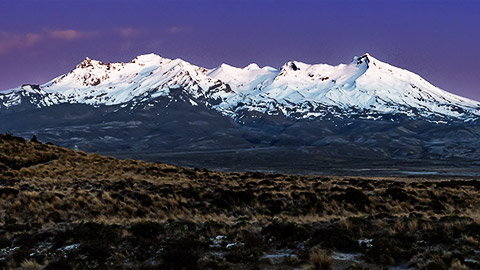
Explore
The following is taken from the Destination New Zealand website.
Kia ora!
Welcome to the Tourism New Zealand trade website.
Learn, be inspired and find everything you need to create the best New Zealand experience for your clients.
Get inspired.
Explore what's waiting for your clients in New Zealand.
Watch this video
Explore our Space: Virtual fam trip. (1:00)
You can become a New Zealand Expert.
We know New Zealand’s a great place. We want you to know too.
Our 100% Pure New Zealand Specialist Programme is a fun, interactive way to increase your knowledge of New Zealand.
Each new level of achievement will upgrade your status to Bronze, Silver or Gold. Unlock a range of great benefits as you progress through the tiers.
Get inspired, increase your sales and help create your clients' dream trip.
To get started, sign up and complete some fun and interactive online training modules.
Learning Activity: New Zealand Destination
There are two parts to this activity.
- Choose a destination within New Zealand and ‘sell’ the place to your online peers. It does not matter if you have visited the place or not.
However, it must include descriptive words for advertising/selling, such as:
- Accommodation features – the accommodation can be top-of-the-line or basic.
- Activities.
- Identify critical features, benefits, luxuries, one-of-a-kind, etc., that are unique to the destination and list these.
- Using the above points, write a 250-word famil report that best describes the destination.
- Use descriptive words to conjure up thoughts of being already in the destination, e.g. ‘being at one with nature while lying in an outside tub’.
- 'After sleeping in a luxurious king-sized bed, you will be refreshed and ready to explore the many local art galleries, craft wares and pottery shops that line the quaint main thoroughfare'.
Address the two points above and post your responses to the forum New Zealand Destination.
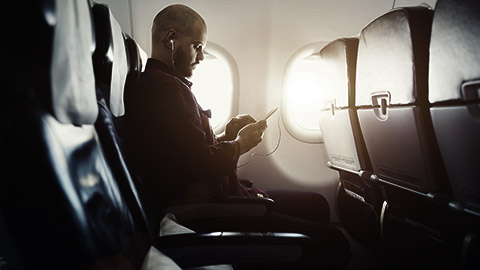
You must use your time wisely to compose an engaging and informative report based on a previous holiday or tourism experience.
You must inform your prospective audience about your experiences in an engaging and informative famil report.
In your famil report, you need to include information on each of the five sectors of tourism. These are as follows:
- 2x Accommodation options
- 2x Transportation options
- 3x Activities and attractions
- 2x Ancillary services
- Sales.
Accommodation, transportation, activities, and attractions are straightforward, and you should know what to do here. The other two tourism sectors are also straightforward, but let’s look at what you’re expected to cover for these.
Ancillary Services
Restaurants and cafes (NOT part of an accommodation property; if they were, they are considered an onsite facility). It also includes retail shopping, visitor information services, etc.
For example, ‘Fiji Boutique’ is an amazing retail outlet in the heart of Nadi that sells high-quality, authentic Fijian goods. The local taxi driver who took us to our resort told me about this shop, and all I can say is, “Wow, what an amazing little gem!” There is a range of arts and crafts, clothing, jewellery, and so much more. The shopkeepers were extremely helpful and knowledgeable about all the products in store. The prices are very reasonable. I would highly recommend a visit to this store while in Fiji. It’s open Monday to Saturday from 9 am to 4 pm.
Sales
To cover this part of the famil report, you need to discuss how someone can book with each operator you include in your famil report.
For example, ABC Car Rentals only take direct bookings over the phone or through their website. Hotel Excellence is affiliated with travel wholesaler Go Holidays, so you can book through a travel agent, but they also take direct bookings through their website and over the phone.

Diversity in the Workplace
The hospitality and hotel industry is a unique melting pot of cultural diversity where workers, customers, and clients from different backgrounds from all over the world come together. This can present challenges; for example, a lack of cultural awareness and not hearing diverse voices can create unhappy teams and a poor customer experience. But diversity also presents unique opportunities. Having a culturally diverse team can:
- Help you better understand and improve the service for different types of guests.
- Tap into different views, ideas, and perspectives to innovate and offer new and different services.
- Create better market segmentation because you understand your audience and can adapt services and products to meet their needs.
The importance of diversity in hospitality can’t be underestimated. It means not just recognising differences but valuing them and understanding how they may impact the individual experience. Both employees and customers come with a unique background, set of experiences and cultural history.
Diversity covers many things and people, from gender to skin colour. The areas of diversity for our studies include:
- Age
- Nationality
- Ethnicity
- Race
- Cultural identity
- Sex assigned at birth
- Gender identity
- Sexual orientation
- Physical ability
- Mental ability.
So, what does diversity mean for the tourism workplace, specifically in terms of communication?
- With diversity comes the probability of misunderstanding, for example, conflicting beliefs leading to differences of opinion.
- Slang, jargon, and colloquial expressions not understood.
- Communication barriers:
- Language barriers
- Age and hearing abilities
- Potential for unconscious bias
- Differences in pronunciation.
Marketing to families can mean:
- 1 parent families
- 2 parent families
- Blended families
- Same-sex couple families
- Gender-neutral families.
Tourism marketing to families is inclusive to all families.
Marketing to tourists with challenges can mean:
- Physical challenges
- Mental challenges
- Both physical and mental challenges
Tourism marketing to people with challenges is inclusive of all challenges.
Reflection
Read this blog about the importance of diversity in the hospitality industry. What are the key benefits of diversity in tourism/hospitality workplaces?
What is Diversity?
Di-ver-sity
Noun
"There was considerable diversity in the style of the reports" a range of different things:
Synonyms: Descriptive, report, version, story, narration, narrative, statement.
"Newspapers were obliged to allow a diversity of views to be printed"
Synonyms: variety, miscellany, assortment, mixture, mix, melange
the practice or quality of including or involving people from a range of different social and ethnic backgrounds and of different genders, sexual orientations, etc.:
"equality and diversity should be supported for their own sake" · · "cultural diversity within his businesses helped generate his success"
Source: Oxford English Dictionary
Diversity is a keyword in many areas, from employment to family life. Ensuring we are mindful of ‘everyone’ should not be hard. The age-old saying, ‘Treat others as you expect to be treated yourself,’ can easily apply here.
So, why do we need to think about diverse audiences in tourism?
Not every destination is going to be attractive for all visitors. Some locations have challenging landscapes; this could affect physically impaired people; maybe they are in a wheelchair or have limited physical movement. What happens when a visitor does not speak English? What are the implications for writing a famil report in tourism? For example, to be of use, the famil report should consider the following.
Ask yourself, who is your target audience?
- Families
- Adults only
- Adventure/thrill seekers
- Artists
- Wellbeing/health visitors
- Domestic/International travellers.
How can you showcase features/benefits to them?
- Imagery
- Language: is the report available in more than one language?
- Descriptive wording
- Why would they want to visit?
- You have ‘sold’ the destination to them by appealing to their senses, thoughts, and expectations.
Reading
Read this article on the importance of diversity in hospitality.
Next, read Diversity in Tourism: Diversity = Everybody.
Unconscious Bias
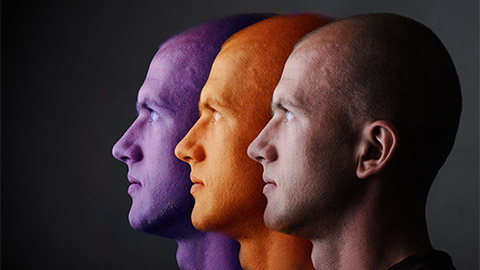
Unconscious or ‘hidden’ bias refers to attitudes and patterns of perceptions that are held subconsciously and can be very ingrained. We all have them. Unlike stereotyping, these automatic associations can lead to assumptions that are not always accurate and can harm decision-making.
Unconscious bias influences thoughts and actions that can create unfair advantages or disadvantages without the decision-maker’s awareness. It can be about someone’s ethnicity, gender, age, accent, sexual orientation, or parental status, to name a few. It unwittingly permeates workplaces, affecting decision-making processes, including recruitment, promotion, development, and access to other opportunities.
Ultimately, when implicit biases influence judgements and decisions, they can result in unfair and negative consequences for those subjects of this bias, potentially resulting in discrimination.
Why is unconscious bias considered critical when working in a diverse workplace such as the tourism industry?
Our brains create misinformation and stereotypes that can hurt our attitudes, leading to discriminating behaviour and treating people unfairly, without customers or work colleagues realising it.
In the workplace, if a person is affected by unconscious bias, it can mean that they will treat people differently. A manager could give some staff an unfair advantage over others who are perhaps unfairly treated–even though they are good at their job. This can hurt the team's functioning, lower workplace morale, and may mean poor staff retention.
What can be done to overcome unconscious bias?
By understanding and being aware that unconscious bias can happen, a manager can raise awareness within the team. They can also seek to create diversity in the workplace by hiring people from, for example, different cultures. Management can combat ageism by hiring a mix of younger and older employees and put them together in a group to have them interact and form positive relationships. This gives the older members of the team a chance to show the value of experience to younger members of the team.
Gender bias can also be a problem that often affects women more than men. Gender bias can be avoided by considering the best person for the position rather than male or female in the position.
Reading
Read this article on cultural diversity and why it is essential in the hospitality industry.
How the Audience Engages
Not everyone prefers to learn the same way. Some prefer hands-on activities, while others might listen and absorb information.
Learning style theory refers to the differences in how individuals learn. According to many theories, people can be classified according to their preferred learning style. These learning styles differ based on which learning modalities best fit the individual when taking in new information.
Learning styles can be categorised into four types: visual, auditory, kinaesthetic, and reading/writing. The definitions are:
- Visual learners prefer visual aids like pictures, videos, charts, visual cues, and infographics.
- Auditory learners thrive through listening, which includes live or recorded information, podcasts, and videos with accompanying audio.
- Kinaesthetic learners engage in hands-on activities when participating in participatory exercises.
- Reading/writing learners prefer text-based learning. They do best when reading written materials, such as manuals, wikis, guides, and FAQs. These training participants will also engage well with slide presentations that use text and handouts.
Recognising and accommodating these styles enhances the effectiveness of communication. It is essential to understand these learning styles and to be able to adapt instruction and dialogue for each of the expected sensory modalities.
Learning Activity: Learning Styles
Remember, people process information in many ways. Some learn visually, others learn by listening, and the kinaesthetic types prefer to learn through movement.
- How could you engage and communicate with a visual person?
- How could you engage and communicate with an auditory person?
- How could you engage and communicate with a kinaesthetic person?
Post your responses to this activity in the forum Learning Styles.

The second part of your assessment requires you to prepare a digital presentation that supports destination marketing and communicates to diverse audiences.
You can choose any form of digital presentation. For example:
- Web page
- Blog
- Vlog/Video
- Virtual reality
Your digital presentation must market a destination and appeal to a wide range of audiences.
Your Online tutor must be able to access the chosen digital format to provide feedback and mark the presentation. Your digital presentation must be eye-catching, informative and give the audience a great overview of the destination and communicate with a diverse audience
We live in an ‘instant’ world, meaning everything is available at our fingertips, from internet pages to TikTok. There is a great advantage to having these platforms. When considering holidays, visits, etc., people can browse destinations and imagine they are already there. It is up to the tourism people to market the destinations, appealing to a vastly diverse audience. How these platforms market a destination can make the difference between successfully or unsuccessfully attracting visitors.
So, let’s look at various digital presentation platforms.
Webpage

This is a great tool to market a destination. The page can be colourful, creative, and eye-catching to attract readers to explore the webpage further. Most people wanting to travel search the web for places, ideas, accommodation, etc.; your webpage can provide everything a potential tourist will need.
Check the websites below for examples of how to make a webpage.
Explore
Adobe®
Sometimes you don’t need a traditional website to get your message across. Adobe® Express is ideal for projects that don’t require more than one page, such as portfolios, resumes, presentations, blog posts, and photo galleries. Adobe® Express can showcase a product catalogue, advertise a special offer, or act as a weekly or monthly newsletter for businesses.
No matter what you create with Adobe® Express, you can do it without spending a penny. Adobe® Express is available on the web and mobile from a single account. Additionally, Adobe® hosts Adobe® Express, so you don’t need to sign up for web hosting to publish your pages.
Explore the Adobe® page.
Explore
WikiHow®
This WikiHow® teaches you how to write a simple web page with HTML (hypertext markup language). HTML is one of the World Wide Web's core components, making up web page structure. Once you've created your web page, you can save it as an HTML document and view it in your web browser. Creating an HTML page is possible using basic text editors found on both Windows and Mac computers.
Explore the WikiHow® page below.
Reflection
For your development, go to the following Tourism New Zealand website and identify four (4) features of the opening page that may help to engage diverse audiences.
This exercise will get you thinking about what you want to put on your webpage.
Create a list of what you want to put on your webpage.
Also creating a vision board/mind map of how your webpage would look would be advantageous.

How to design a good-looking website.
- Keep your design balanced.
- Compartmentalise your design by using grids.
- Pick two or three base colours at most for your design.
- Try to make the graphics go well together.
- Improve your website’s typography.
- Make elements stand out by adding white space around them. (Positive and negative space is vitally important).
- Have all of the elements connected.
Explore
Explore this website about the principles of designing a visually appealing website.
Also, explore creative websites.
These are the best travel websites to give you some ideas.
Learning Activity: Basic Webpage
Have a go at creating a basic webpage to market a tourist destination. Don’t worry if you have not done this before; you are practising to see if your ideas/vision can be incorporated easily.
Once you have finished this exercise, reflect on the ease/difficulty you had in creating the webpage. Also, specify which digital platform you have chosen for your webpage.
Share the link to your webpage, with images of the construction (screenshots are fine), plus your reflection on the forum, Basic Webpage.
Blog
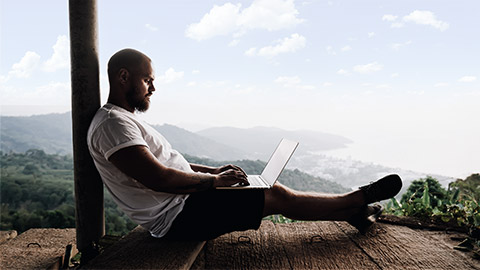
A blog is where regular posts or updates are added or uploaded to a digital platform (e.g. Facebook, Instagram, websites).
They:
- Provide information, usually in small amounts, in various forms, e.g. Reviews, podcasts.
- Tell stories.
- Show photos or images.
Oxford Languages Blog Definitionblog (noun)
A regularly updated website or webpage, typically one run by an individual or small group, that is weritted in an informal or conversational style.
Synonyms: Descriptive, report, version, story, narration, narrative, statement.
Verb
Add new material or regularly update a blog:
"It's about week since I last blogged".
Most blogs have one author or sometimes a small group of people who contribute to the blog. Companies have identified the advantage of using a blog to market their wares. In the tourist sector, it is a great way to advertise destinations, accommodation, activities, dining, etc. and meet the needs of a diverse audience. A blog can help to market a destination. It is a valuable and effective marketing tool and can direct people to an individual's or a company's website. It can inspire people to want to travel to a specific place. There are six (6) critical points on how to write a successful blog. These are:
- What/who is your target? This can range from a small, select audience to everyone.
- What are you going to write about? The blog MUST have purpose or meaning; otherwise, why would anyone want to follow and read it?
- Which platform will you use and why? This can influence who has easy access to your blog.
- Blogs are written in a journal or conversation style and include images.
- Have a heading, introduction, and conclusion. Keep sentences short.
- Keep a blog to a reasonable length, and always proofread the work.
Watch this video
It is a tutorial on how to create a blog. Take notes on the key points. (10:36)
Blog Platforms
The most popular blog platforms are detailed in the following resource. Click on the headings to explore.
Bloggers can share a good mix of content on Instagram, from videos to images to reels to live streams; you can find creative ways to share thought-provoking blog content on this platform that sparks conversation and drives followers to your website to read the full post.
You can’t use direct links in your post captions; however, you can always direct traffic to the link in your bio, so long as your content is interesting enough for people to want to leave the app and learn more. Now, you can even use links in your Instagram stories.
Facebook is another social media platform for bloggers to get blog exposure; billions of people use it daily, which is why it’s the most popular social media platform.
Millions of businesses use Facebook to their advantage, promoting their brands through ads, growing customer relationships in groups, running dedicated business pages, and using live streaming tools.
Bloggers can use Facebook to grow their following and promote their blogs. You can create a dedicated page and group for your blog and share links to your most recent content. You can also use FB ads and drive traffic to your blog that way.
Bloggers can use hashtags, choosing specific ones for their blog’s niche and individual posts. You can also tweet the links to your blog posts and other social media platforms to stay connected with your community and have real-time conversations with people.
LinkedIn is considered a social media platform for professionals. People share news, information, trends, and updates while making strategic business connections.
Bloggers can use LinkedIn to showcase their expertise, e.g., you can create articles for your LinkedIn profile and share links to your blog in your posts. You can also comment, like, and share posts from people in your audience to further your connection.
Surprisingly enough, it’s the second-largest search engine behind Google. Users are searching for any and everything on this platform, including bloggers.
Bloggers can take advantage of video marketing on YouTube by breaking down their blog topics into short videos. You can use your YouTube video in the actual blog post on your website and share the link to your blog in your YouTube video’s comment section to take advantage of solid cross-promotion.
Pinterest is excellent for boosting your blog traffic as well. Although it started as a social media platform geared more toward a feminine audience, it’s since evolved into a platform everyone enjoys, from businesses to bloggers to people who crave visual content.
Bloggers can use Pinterest to link to their blog posts and share the visual elements of their brand.
You can share extraordinary visuals and images accompanying your blog posts to spark an interest in your audience and get them to visit your blog.
Tumblr is a micro-blogging platform that’s incredibly easy to use. You can start a blog on the platform, follow others, and find your tribe. Since it’s already set up to support bloggers, it’s one of the best platforms you can use to grow your following and direct traffic to your blog.
Another social media platform for bloggers is Medium. Its tagline is, “Medium is a place to read, write, and connect.” Like Tumblr, it’s a platform for bloggers and other businesses looking to post articles, blog posts, and other written content on any topic.
You can start a blog directly on this platform or republish your blog posts on your Medium profile to extend your reach.
Clubhouse is a newer social media platform based on voice. You can have conversations with people around the world in real-time. Just pop into an audio chatroom, listen, and learn from your peers.
With podcasting growing in popularity, it’s wise to explore Clubhouse as a segue into podcasting. Bloggers can use Clubhouse to talk with their followers about their blog content, open conversations with their peers, and grow a community through discussion.
Explore
Explore this link. It has some great blogging examples about travel. It has diverse perspectives on sustainable tourism and responsible travel.
What We Consider the Best New Zealand Bloggers!
It is hard to describe how much of an impact a trip to New Zealand will have on your life. From a life-changing gap year to an eye-opening road trip, you will leave New Zealand changed forever. Some keep those souvenirs locked in their brain, others write daily in their travel diary, but many log all their adventures and travel tips in their blog. We have compiled 10 awesome blogs from travellers who came to New Zealand for you to check out. Be inspired by their stories, learn from their tips, or copy their itinerary. There is a lot to learn from reading other traveller's stories.
Reflection
Read through some of the listed blogs. What makes these blogs interesting to read?
Which one did you find most interesting and why?
Vlog
A vlog is like a blog, except instead of a written piece of information it is in the format of a video. Travel vlogs have become an extremely popular way to showcase a destination and its attractions, either in the form of an individual documenting their travels or a company video casing a destination they want to market. Vlogs appeal to a wide range of audiences.
Watch this video
It is about how to create a vlog. Take notes on the key points. (23:40)
The most popular vlog platforms are specified below. Click on the headings to explore more.
Regarding vlogging, YouTube has to be the number one platform to consider.
Vlogging has only really taken off since YouTube came into existence. This long-established platform has gained over 1 billion users, and over 500 hours of videos are uploaded every minute.
You can create your channel on YouTube, and uploading your content is straightforward. Also, YouTube allows you to monetise your channel by putting ads in your videos. You can leverage your channel by promoting it, too.
With a large user base of around a billion users and counting, Instagram has rapidly soared into popularity as a photo-sharing social media platform. However, with the introduction of Instagram Reels and Instagram Video, videos have also made a home on the platform.
With Instagram Video, you get to share longer vlogs that can include your daily routine, travel vlogs, and more. As short videos are trending nowadays, you can use Instagram Reels to upload shorter clips of your vlog to grab your audience's attention. Instagram Live and Stories will allow you to create a stronger bond with your followers.
You can make the most out of Instagram with the platform’s robust advertising options and use hashtags to get your vlogs discovered by the right audience.
Check out Instagram and its Live, Stories, and IGTV. The new features of Instagram Live, Stories, and IGTV are three very different and unique vlog websites to share with followers.
Instagram Live is one of the best vlogging platforms to watch vlogs and is an alternative to YouTube. For another, it can be used to increase fan-following and brand identity.
As one of the most popular social websites, Facebook is among the best vlog sites, with dramatically increasing numbers of users. The advantage of Facebook lies in the direct engagement with your followers. Your followers can see your vlogs if you already have an established page.
You can create pages, gain followers, and run paid ad campaigns to increase your visibility. Like YouTube and Instagram, this social media platform lets you live-stream your videos with Facebook Live.
Creating a vlog and uploading it to Facebook assures a guaranteed reach within your friends’ or followers’ list. And if they share it with their friends, the reach of your vlog multiplies instantly.
Additionally, Facebook allows you to design your page layout as you like, save live videos to the video library, and interact with your audience in real-time. You can create an account and upload your vlog in just a few minutes. To get more exposure, Facebook also has built-in business marketing tools. Its marketing system is powerful enough to turn a simple video into an effective advertisement for your brand.
DailyMotion is a platform that focuses on professional, high-quality video content. Like Vimeo, this might be a good platform if you already have some vlogging experience or use high-end equipment.
DailyMotion allows you to monetise your content. Just remember to take note of the restricted time duration and storage capacity of the videos you upload.
DailyMotion looks like a YouTube video-sharing platform. The main difference is that YouTube has more inclusive videos, while DailyMotion focuses on professional, high-quality video content.
Vimeo is one of the most creative vlogging platforms where you can unleash your new ideas and creativity. It is an upgraded version of DailyMotion with less amateur content.
You can track how your content performs using the analytics dashboard. You can get this feature and more storage and advanced privacy control by upgrading to one of the premium subscription plans.
There are no ads; if your content is really good, your vlogs can get featured in a Staff Pick.
As short videos have become increasingly trendy, there are many benefits to uploading your shorter vlogs to TikTok. It's an excellent platform for gaining popularity in a short amount of time. Since its inception in 2016, TikTok has proven to be the fastest-growing social media app, with over 1 billion users.
With short videos ranging from 15 seconds to 3 minutes long, you can create quick and engaging vlogs on TikTok. You can play around with filters, add soundtracks, and use cool effects on your videos.
You can also create content on trending topics and do challenges to increase your reach. If you’re new to this platform, look at tips for TikTok beginners.
With more than 15 million daily visits, Twitch is one of the most popular streaming platforms and a favourite among beginners. As a vlogger, there's much to benefit from the platform’s dedication to live-streaming.
Twitch has always been a go-to platform for gamers to live-stream their lets-plays. With the introduction of the IRL category, we can see the platform opening the doors to other niches. IRL is short for “in real life” and, on Twitch, includes content beyond gaming streams, such as art creation, reaction videos, and GRWM (get ready with me) streams.
You also interact with your audience in the live chat, where you can do Q-and-As, thank them for donations, and welcome new subscribers.
DTube is the first video-sharing platform to leverage the power of blockchain technology. If you’re looking for a YouTube alternative, consider switching to DTube. This decentralised platform is secure, ad-free, has no hidden algorithms and allows you to monetise your vlogs in cryptocurrency.
A unique DTube feature is instead of displaying view counts, each video shows the amount it has earned. Note that you can only earn for seven days per video upload, and once you upload your vlog, it cannot be edited or deleted.
As DTube has an active community, you can use it to collaborate with other creators and attract more audiences.
Video/Vlog

Many people prefer to watch a video rather than read it. This is reflected in social media today, favouring video content (think TikTok). Making video marketing in tourism an essential part of any tourism marketing mix and a means of communicating with a diverse audience.
Video is the perfect medium for marketing tourism, making for exciting and enticing viewing with high customer conversion rates. Video can help increase business visibility and to get more customers.
Watch these videos
National Parks Adventure (1:59)
Disney Marketing (1:28)
Ngai Tahu Tourism (11:51)
Click on the arrows at the bottom of the activity to scroll to the next video.
Virtual Reality

It is a growing and great concept of allowing someone to experience something without being there. In tourism terms, a person can ‘be’ in the destination without leaving home, e.g., a virtual hotel tour or activity. Essentially, VR can simulate the destination as if the person was there.
Remember our discussion on the four (4) key characteristics of service?
Intangibility was one of the critical characteristics. Video and virtual reality tours are ways of mitigating the effects of intangibility. Virtual reality tours are one of today’s prevalent emerging technology trends.
Reflection
Consider how VR can be used in marketing a destination and communicating to a diverse audience.
Think about what resources they might have available, as not everyone will have a VR headset.
Watch this video
It is a VR tour of the Atlantis Hotel in Dubai, UAE. (4:32)
Explore
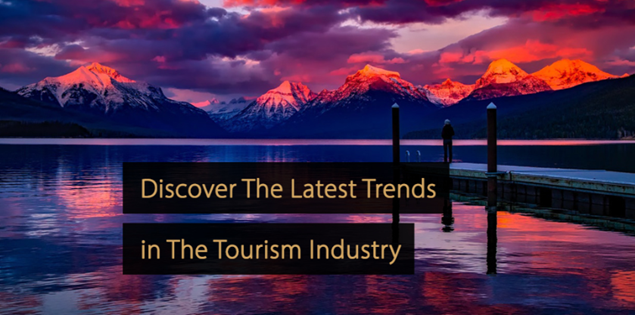
To end Part B of WPP, let's look at the latest travel trends for 2024. Maybe you will get to experience some of these trends while on a famil.
Tourism trends refer to the evolving patterns and preferences in the travel industry. These trends are important as they reflect changes in traveller behaviour, emerging destinations, technological advancements, and shifts in the global economy and society.
Understanding these trends is crucial for tourism businesses to adapt, innovate, and remain competitive. They help in anticipating future market demands, improving tourism experiences, and driving sustainable and responsible tourism development.
Keeping up with these trends ensures the industry can meet the dynamic needs of travellers and capitalise on new opportunities.
Learn more here.

